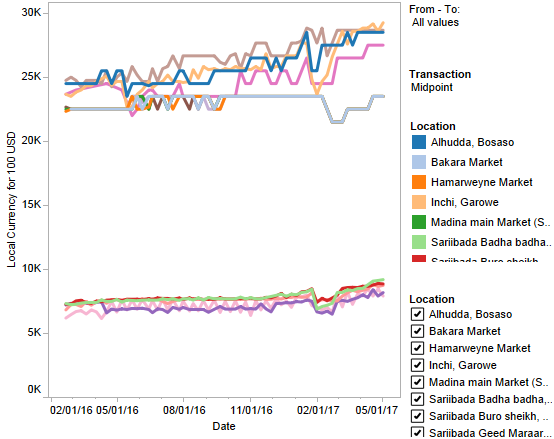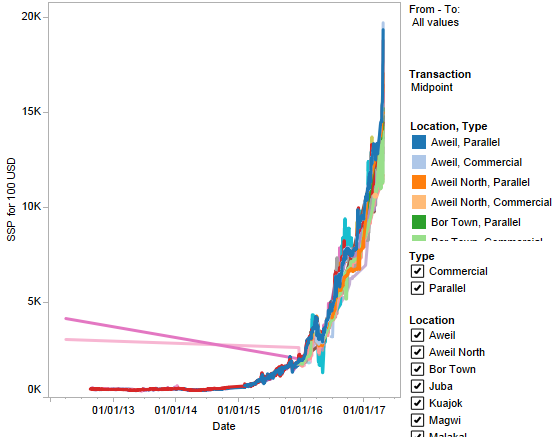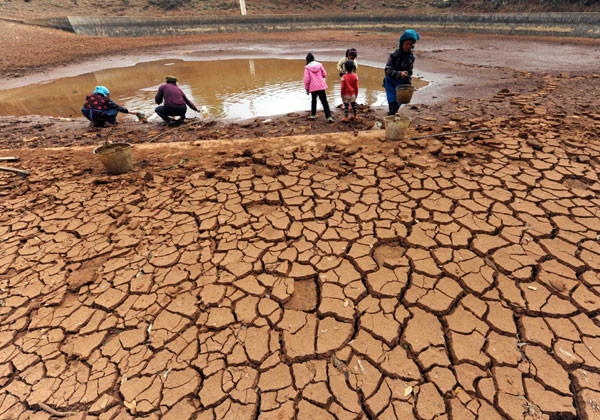By: Staff writer
Nairobi , Kenya- The World Bank has said is using real-time tracking methodologies to monitor market prices in Somalia and South Sudan to fight drought that has caused food insecurity.
To implement effective policy responses in fragile countries such as Somalia and South Sudan the World Bank is using innovative survey and data analysis methodologies that requires reliable and timely data, which are usually unavailable in these countries to deliver urgently needed humanitarian response.
Data collection on daily exchange rates and weekly prices on goods and services is being done in Somalia and South Sudan.
This was first implemented in South Sudan last year where it worked effectively.
This year the World Bank is using the same method to monitor market prices in 14 urban locations in Somalia and is being supported and funded by the Somali Multi-Partner Fund (MPF).
Below is how this method is being used;-
Somalia

The real-time dashboard tracks weekly market prices and currency exchange rates across the 14 urban locations. The dashboard presents a dynamic and rich set of up-to-date prices for a wide range of different types of products and services. The items include livestock, food (cereals, milk), non-food items (clothing, cosmetics), utilities (electricity), and services (such as motor vehicle repair), from both the tradable and non-tradable sectors.
The dashboard provides useful insights into the dynamics of the severe drought that’s affected Somalia this year. In the “Town Prices” tab, prices aggregated to an index using CPI-like weights can be tracked back to early 2016. These prices were surprisingly stable, despite the onset of the crisis, with no shortages of products in markets. Thus, urban markets are functioning and products available while most of the acute food insecurity is in rural areas. Hence, interventions should utilize the existence and functioning of those markets.
The “Product Prices” tab adds an additional nuance: select the product “Cattle meat” and focus on the markets in Mogadishu by selecting (while pressing the Ctrl key) “Bakara,” “Hamarweyne,” “Madina,” “Siinay,” and “Suuq Bucaad.” The market prices for meat steadily declined in those markets from an average of around US$ 4.65 in March 2016, to just over US$3.00 in May 2017. Two factors contributed to the decline in prices: livestock is now in poor condition and, thus, attracts lower prices. More importantly though, pastoralists offer their livestock for sale at lower prices as they need cash for basic goods.
Adding to supply by importing those products through food assistance programs is dangerous. Prices will drop further, potentially forcing local producers out of business. To avoid stepping into this vicious circle of aid dependency, food assistance programs should carefully and continuously assess whether products need to be imported or can be sourced from local food producers, for example by distributing food vouchers.
Hence, the monitoring of markets and their price dynamics is essential for designing and implementing life-saving interventions. The dashboard provides this information in a timely and ready-to-use manner.
South Sudan

The dashboard also provides evidence for the impact of the depreciation on market prices. Prior to the official change of the exchange rate regime, prices had already increased substantially reflected by an annual inflation of 120 percent. This confirms that prices were subject to changes in the parallel market rate, which started to depreciate in early 2015. Most traders did not have access to foreign exchange at the official rate and, thus, priced products using the parallel market rate. In the first six months after the change in the exchange rate regime, prices doubled while the official exchange rate skyrocketed by 1288 percent from 2.95 SSP/USD to 38 SSP/USD. The parallel market rate increased more modestly by 247 percent to 47 SSP/USD as it started from a higher base of 19 SSP/USD in December 2015. The continued existence of the parallel market with a premium of 20 SSP/USD (September 2016) compared to the official rate indicates that foreign exchange is still insufficiently provided at the rates offered by commercial banks. All of this information drawn from the real-time dashboard is without a doubt helpful for the government in making decision and also sheds light on the reality of market prices as it provides not only timely information but also high-quality data.
This Data collection on daily exchange rates and weekly prices is being done using Android handheld tablet computers equipped with SurveyCTO.
Source: World Bank, editing By Nangayi Guyson
Copyright ©2017 Alleastafrica.com All rights reserved. The information contained in Alleastafrica.com may not be published, broadcast, rewritten, or redistributed without the prior written authority of Alleastafrica.com



